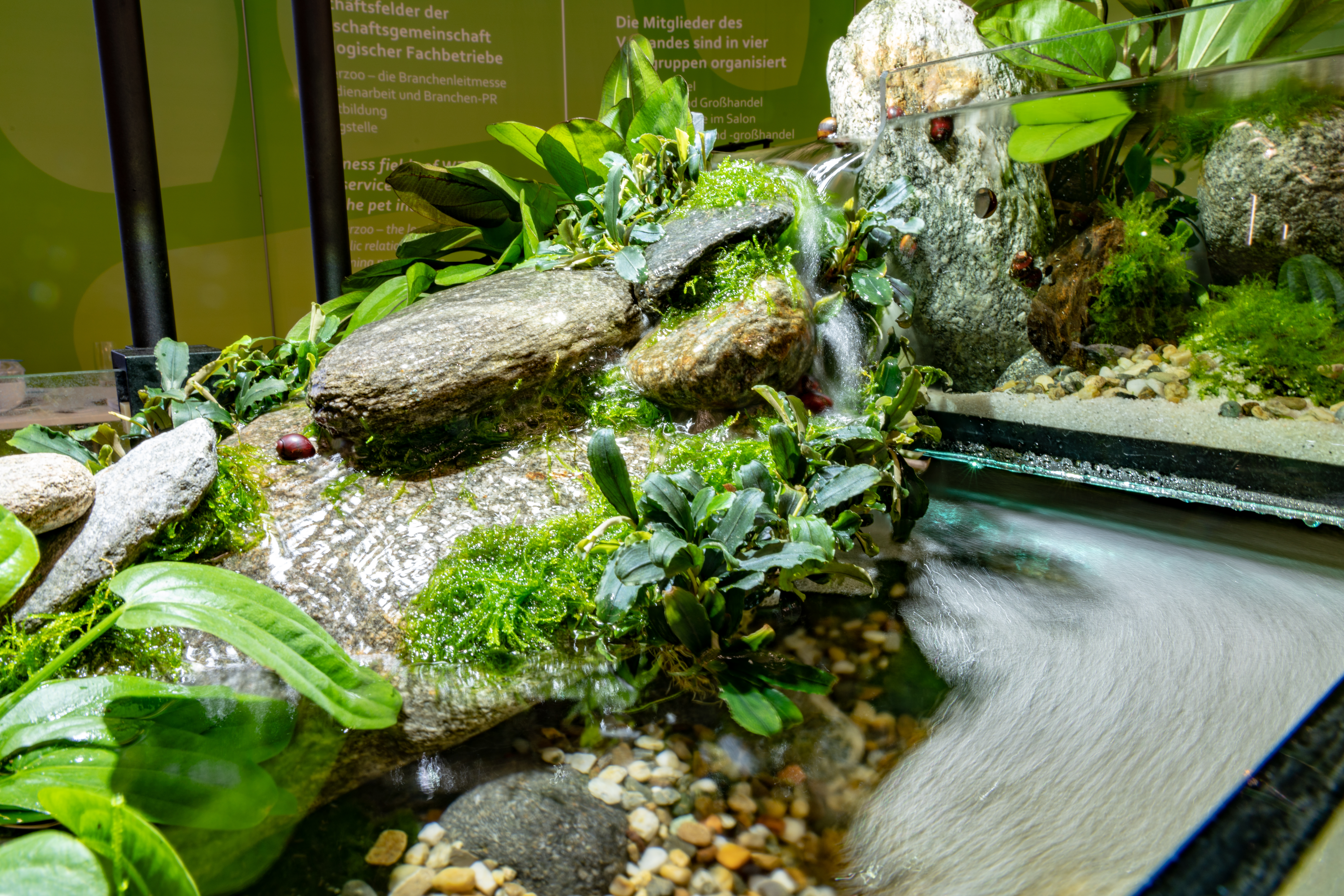Riverscapes – the most recent trend in aquascaping

Mimicking a natural, high-current environment, the latest in aquarium design brings a beautiful riverscape to the home.
Closer to nature
Oliver Knott recently presented a new layout style for aquaria that is both very close to nature and easy to maintain and care for: the stream tank. The tank mimics and looks as if a piece of a beautiful natural stream has been cut out and placed in a living room.
These tanks are specifically designed to allow a strong one-directional current that passes along rugged natural rocks and aquarium plants above and below the waterline. In this way, a natural habitat for the fish and invertebrates is created.
Improved fish well-being and health
The original, natural habitat of many aquarium fish is a stream, in which they swim up against the stream’s currents. Still-standing water in traditional aquaria does not offer such a vibrant, everchanging environment that is so beneficial to the fish. It is noticeable at once how fish flourish in a high-current tank. Not only do they feel visibly at ease in their new environment, their vitality increases, stress is reduced and, overall, their health improves. Furthermore, more intense body colours mean they present a much more attractive picture in general.
A stream tank is actually an open-topped paludarium: an aquarium whose layout includes a large land part. In the stream tank, Oliver likes to structure this terrestrial area with rocks and driftwood, just like the scenery you would find around a stream in a forest. The tanks are not only beautiful to look at, there is also an actual benefit: it not only adds a relaxing green splash of freshness, but is actually beneficial to the climate inside a home.
Getting the best from nature
Gravity is the motor for the stream. A pump brings the water to the highest part of the tank, from where it flows down over the rocks, forming a strong current. The tanks make full use of the combination of waterscapes and terrestrial scenery: as in nature. Many traditional aquarium plants are actually not aquatic plants, but originated in swamps where they are submerged only part of the time. Placed in a truly swampy, natural environment such plants look completely different from how we have come to know them in traditional aquaria.
Epiphytic plants give an added attraction: they do not need to be planted into the substrate, but can grow on the rocks, like ferns. Mosses add a very pristine flair. All of these plants are low-maintenance and do not need much in terms of light and fertilisers. The open tank is lit by a hanging aquarium light system using low-energy, electronically controlled LEDs. It is very easy to create light moods with these modern aquarium lights: simulate dawn or dusk or even cloudy skies during the day, and moonlight during the night!